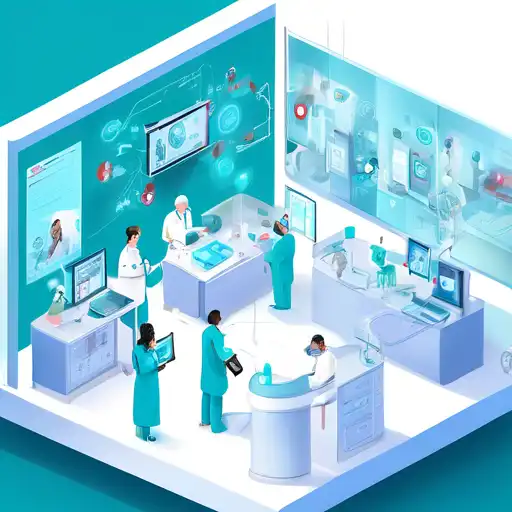Introduction to IoT in Healthcare
The Internet of Things (IoT) is revolutionizing industries across the globe, and healthcare is no exception. By integrating IoT devices and technologies, healthcare services are becoming more efficient, personalized, and accessible. This article explores the transformative impact of IoT on healthcare services, highlighting key innovations and benefits.
Key IoT Innovations in Healthcare
IoT technologies are being deployed in various aspects of healthcare, from patient monitoring to hospital management systems. Below are some of the most impactful innovations:
- Remote Patient Monitoring: Wearable devices and sensors enable continuous monitoring of patients' vital signs, allowing for timely interventions.
- Smart Hospitals: IoT devices automate and optimize hospital operations, from inventory management to energy consumption.
- Personalized Medicine: Data collected from IoT devices can tailor treatments to individual patients, improving outcomes.
- Telemedicine: IoT facilitates remote consultations, making healthcare more accessible to those in remote areas.
Benefits of IoT in Healthcare
The adoption of IoT in healthcare brings numerous benefits, including:
- Improved Patient Outcomes: Continuous monitoring and personalized treatments lead to better health results.
- Cost Reduction: IoT can reduce healthcare costs by minimizing hospital visits and optimizing resource use.
- Enhanced Efficiency: Automation of routine tasks frees up healthcare professionals to focus on patient care.
- Increased Accessibility: Telemedicine and remote monitoring make healthcare services more accessible to underserved populations.
Challenges and Considerations
Despite its benefits, the integration of IoT in healthcare faces several challenges, such as data security and privacy concerns, the need for robust infrastructure, and the high cost of implementation. Addressing these challenges is crucial for maximizing the potential of IoT in healthcare.
Future Prospects
The future of IoT in healthcare is promising, with advancements in AI and machine learning further enhancing the capabilities of IoT devices. As technology evolves, we can expect even more innovative solutions to emerge, transforming healthcare services in ways we can only imagine.
For more insights into how technology is shaping the future of healthcare, explore our articles on Digital Transformation in Healthcare and The Role of AI in Medicine.
Conclusion
IoT is undeniably improving healthcare services, offering solutions that enhance patient care, reduce costs, and increase accessibility. While challenges remain, the potential of IoT to transform healthcare is immense. As we move forward, embracing these technologies will be key to building a more efficient and patient-centered healthcare system.
